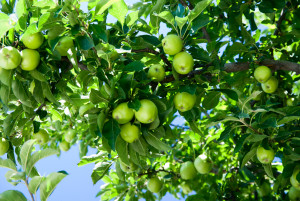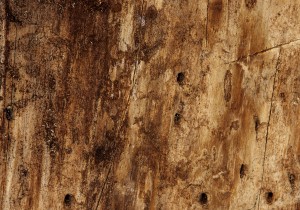 The Everglades is home to an array of plants that thrive in the wet, subtropical climate. Although mangroves and grasses come to many people’s minds when thinking about plant life in the Everglades, we’d like to profile a plant that many people might not know about that is native to the area: the pond apple.
The Everglades is home to an array of plants that thrive in the wet, subtropical climate. Although mangroves and grasses come to many people’s minds when thinking about plant life in the Everglades, we’d like to profile a plant that many people might not know about that is native to the area: the pond apple.
The pond apple, Annona glabra, is a shrub or small tree with evergreen leaves, white/pale yellow thick-petal flowers and large fruit. This plant is also known as alligator apple, swamp apple, corkwood, and monkey apple. Along with the Everglades, this plant is also native in the Caribbean, Mexico, Central America, South America, West Africa, and South Asia.
They can grow up to 30 to 40 feet tall by 10 to 20 feet wide. As a young pond apple tree, the bark is gray and scale; as the tree gets older, the bark becomes fissured and can turn to a reddish-brown color. These trees can be found along streams and rivers banks, canal banks, slough swamps, freshwater ponds, lakes, and strands. The pond apple is known to flourish around bald cypress trees. They tolerate salt water and cannot grow in dry soil.
In the past, there was a pond apple forest at the southern end of Lake Okeechobee, but due do drainage over the years this habitat was destroyed. Still, the largest numbers of this species of tree are found in the Everglades, but they can also be found throughout other areas of Florida.
Native Indians and settlers to the Everglades ate the fruit off this tree, but it is now considered unsavory for humans to eat. Most of the fruit will mature and fall of the trees in the fall and winter. When they drop, they are green or green/yellow in color. The fruit has a sweet aroma and the pulp is fleshy, mealy, and pithy. The flesh is yellow/orange in color and is filled with more than 100 dark-colored seeds within. The seeds are poisonous, and powder from the seeds have been known to blind people. The seeds and leaves of this plant are known to be insecticidal. More recent studies are showing that the seeds contain anticancer compound, which may be able to be used medically. Birds, raccoons, squirrels, and alligators have been known to eat the pond apple fruit.
Not only does the pond apple provide food for many animals in the Everglades, it also provides shelter and creates a safe haven for many, as well.
Visit the Pond Apple’s Habitat
Explore where this fruit-filled tree thrives while on an airboat ride. An airboat can take you through many places in the Everglades with the opportunity to see this plant, along with hundreds of other species of plants, many of which are unique only to the River of Grass. To book an airboat tour, call Captain Mitch’s Airboat Tours at 800-368-0065 or click here.
 The Everglades is a distressed ecosystem. Usually, climate change, pollution, and human development come to mind when the topic of a hurting wetland comes up. Sadly, the Everglades are currently facing another threat to its future: a fungus. This fungus goes by the name Laurel Wilt, and it is a tree disease that showed up in the Everglades in 2011.
The Everglades is a distressed ecosystem. Usually, climate change, pollution, and human development come to mind when the topic of a hurting wetland comes up. Sadly, the Everglades are currently facing another threat to its future: a fungus. This fungus goes by the name Laurel Wilt, and it is a tree disease that showed up in the Everglades in 2011.





